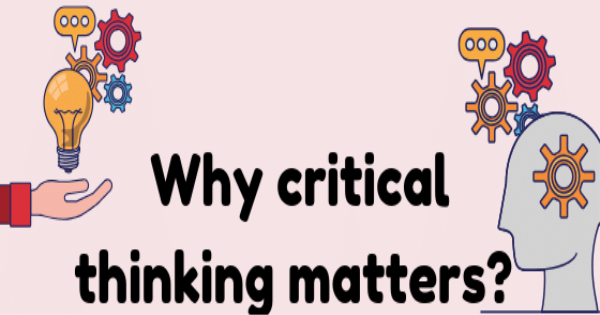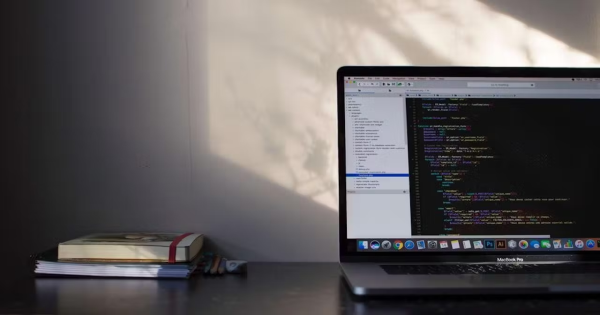In a world shaped by innovation, students hold the key to the next wave of groundbreaking ideas. Whether it’s developing a mobile app, designing a sustainable product, or launching a community solution, students have immense potential to become changemakers. But how does one go from a simple idea to a full-fledged invention? And more importantly, how can students harness their creativity, curiosity, and courage to make it happen?
This article explores the step-by-step journey from idea to invention and offers practical advice on how students can cultivate an innovative mindset. We'll also cover the role of education, technology, mentorship, and resilience in helping young minds turn dreams into reality.

Why Innovation Matters – Especially for Students
Before diving into the process, let’s understand why innovation is vital—especially for students.
In today’s fast-evolving job market, technical knowledge is no longer enough. Employers and society alike value creative problem-solvers—those who can think critically, adapt quickly, and come up with new ways to solve old problems.
Students, with their fresh perspectives and digital fluency, are uniquely positioned to innovate. Unlike adults who may be constrained by “how things have always been done,” students often question the norm and see the world through a lens of possibility. This is exactly what leads to innovation.
Step-by-Step: From Idea to Invention
1. Identify a Problem Worth Solving
All great inventions begin with a problem. It doesn’t have to be world-changing at first—it just needs to matter to someone.
Ask yourself:
-
What frustrates me or people around me?
-
Is there a way to make a task easier or more efficient?
-
Are there social issues that need attention?
For example, a student in India noticed how local farmers struggled with predicting rainfall. This observation led to the development of a low-cost weather prediction tool using simple sensors—an invention that directly impacted lives.
Tip: Start small. Big ideas often grow from solving small, everyday problems.
2. Brainstorm Creative Solutions
Once you've identified a problem, it’s time to think about possible solutions. This is where your creativity can shine.
Use mind maps, diagrams, or group brainstorming sessions to generate multiple ideas. Don’t be afraid to be wild or weird—some of the best inventions started as “crazy” ideas. Think about how your solution might work. Is it a product? An app? A service? A new method?
Example: The creators of Snapchat started with a simple idea: what if photos could disappear after being viewed? That playful thought turned into a billion-dollar social media platform.
3. Do Your Research
Innovation isn’t just about inventing something new—it’s also about improving what already exists.
Ask yourself:
-
Has this been done before?
-
What worked? What didn’t?
-
Who are my competitors?
Use online resources, libraries, YouTube, and even interviews with professionals. Research helps you avoid reinventing the wheel and can guide you toward creating a better version of what’s already out there.
Pro Tip: Google Scholar and patent websites can help you check if your idea has already been patented.
4. Build a Prototype
Now it’s time to bring your idea to life. A prototype is a simple, working version of your invention. It doesn’t have to be perfect—it just has to prove that your idea can work.
Depending on your invention, you might:
-
Build a cardboard model
-
Use 3D printing
-
Create a basic mobile app
-
Make a DIY gadget using Arduino or Raspberry Pi
For students, building a prototype is an exciting way to move from “thinking” to “doing.” Plus, prototypes help you explain your idea more clearly to teachers, mentors, or investors.
5. Test and Get Feedback
Once your prototype is ready, test it with real users—friends, family, classmates, or community members. Gather honest feedback and use it to improve your design.
Ask questions like:
-
Is it easy to use?
-
What problems did you face while using it?
-
What could be improved?
Innovation is an iterative process. Don’t be discouraged if your first attempt doesn’t work perfectly. Even famous inventors like Thomas Edison failed hundreds of times before succeeding.
6. Protect Your Idea
If your invention has commercial potential, you may want to protect it legally. As a student, this step might seem intimidating, but it’s important if you plan to monetize your innovation.
Explore options like:
-
Patents: For original inventions
-
Copyrights: For creative works like software or written content
-
Trademarks: For logos, brand names, or slogans
Reach out to school counselors, entrepreneurship clubs, or local patent offices to learn more about how to protect your intellectual property.
7. Pitch Your Idea
Now that your invention is ready and tested, it’s time to share it with the world!
Prepare a short, persuasive pitch that includes:
-
The problem you’re solving
-
How your invention works
-
Who it helps
-
Why it's better than existing solutions
You can present your pitch at school science fairs, entrepreneurship competitions, innovation expos, or even online crowdfunding platforms like Kickstarter.
8. Learn the Business Side
Turning an invention into a successful product or startup also requires understanding the business side.
Some basics to learn:
-
How to create a business model
-
Budgeting and cost analysis
-
Marketing and sales strategies
-
How to build a team
Many schools and universities now offer entrepreneurship programs or clubs where students can gain hands-on experience.
How Schools and Teachers Can Foster Innovation
Teachers play a crucial role in helping students become innovators. Here’s how schools can support the journey from idea to invention:
-
Encourage curiosity: Allow students to ask questions and explore beyond the textbook.
-
Promote project-based learning: Let students work on real-world problems as part of their curriculum.
-
Provide access to tools: Set up maker spaces, labs, or innovation hubs with basic supplies.
-
Mentor and guide: Offer one-on-one guidance or invite industry professionals to speak with students.
-
Celebrate innovation: Host innovation fairs, contests, or awards to motivate creative thinking.
Inspiring Examples of Student Innovators
1. Gitanjali Rao (USA)
At just 15, Gitanjali invented a device to detect lead in drinking water. She later went on to win the TIME Kid of the Year award and has inspired thousands of young inventors globally.
2. Alaina Gassler (USA)
Alaina created a system to eliminate blind spots in cars, winning a $25,000 prize in a national science fair. Her prototype used projectors and cameras—an elegant solution to a common problem.
These students prove that age is no barrier when it comes to innovation. All it takes is a good idea, a willing mind, and the courage to start.
Top Tools and Resources for Student Innovators
Here are some helpful tools and platforms:
-
Tinkercad – For 3D design and electronics
-
MIT App Inventor – Easy drag-and-drop app building
-
Scratch – Coding for beginners
-
Arduino & Raspberry Pi – For DIY electronics
-
Figma/Canva – For product design and visuals
-
Kickstarter/GoFundMe – For crowdfunding and validating ideas
-
YouTube – Tutorials on everything from coding to marketing
-
Coursera/edX – Free online courses from top universities
The Mindset of a Young Innovator
Being an innovator isn't just about creating products—it's a way of thinking.
Adopt these key traits:
-
Curiosity: Always ask “Why?” and “What if?”
-
Resilience: Expect setbacks, and don’t let failure stop you.
-
Empathy: Focus on how your invention impacts others.
-
Collaboration: Work with peers to combine strengths.
-
Adaptability: Be open to change and keep learning.
Related Articles
-
 Ilmkidunya 05/Aug/2025
Ilmkidunya 05/Aug/2025How to Choose the Right Career Path as a Student
-
 Ilmkidunya 01/Aug/2025
Ilmkidunya 01/Aug/2025Trusted Education Consultants in Pakistan – Students Club
-
 Ilmkidunya 01/Aug/2025
Ilmkidunya 01/Aug/2025How Entry Test Patterns Are Changing in 2025
-
 Ilmkidunya 01/Aug/2025
Ilmkidunya 01/Aug/2025How to Prepare for University Admissions in 2025
-
 Ilmkidunya 27/Jul/2025
Ilmkidunya 27/Jul/2025Study vs. Skill: What Really Gets You Hired in 2025
-
 Ilmkidunya 27/Jul/2025
Ilmkidunya 27/Jul/2025Top 5 Career Options After FSC (Pre-Medical) in 2025
-
 Ilmkidunya 17/Jul/2025
Ilmkidunya 17/Jul/20255 Jobs for Computer Science & IT Students That Do Not Need Programming
-
 ilmkidunya 11/Jul/2025
ilmkidunya 11/Jul/2025Understanding Aptitude and Its Role in Career Planning
-
 Ilmkidunya 08/Jul/2025
Ilmkidunya 08/Jul/2025Top 10 Universities in Lahore – 2025 Guide
-
 Ilmkidunya 01/Jul/2025
Ilmkidunya 01/Jul/2025The Future of Artificial Intelligence in the Job Market
-
 Ilmkidunya 30/Jun/2025
Ilmkidunya 30/Jun/2025How to Set and Achieve SMART Goals
-
 Ilmkidunya 23/Jun/2025
Ilmkidunya 23/Jun/2025Top 10 Engineering Degrees With The Highest Demand in 2025
-
 Ilmkidunya 13/Jun/2025
Ilmkidunya 13/Jun/2025How Internships Help Shape Career Goals
-
 Ilmkidunya 13/Jun/2025
Ilmkidunya 13/Jun/2025Why Critical Thinking Matters Today More Than Ever
-
 ilmkidunya 21/May/2025
ilmkidunya 21/May/2025Top Tips for Building a Strong Academic CV in 2025 – Even with No Experience
-
 Ilmkidunya 14/May/2025
Ilmkidunya 14/May/2025How Languages Shape the Way We Think
-
 Ilmkidunya 12/May/2025
Ilmkidunya 12/May/2025How to Learn Anything Faster: Techniques Backed by Science
-
 Ilmkidunya 06/May/2025
Ilmkidunya 06/May/2025Top Programming Languages to Learn in 2025
-
 ilmkidunya 28/Apr/2025
ilmkidunya 28/Apr/2025Best Short Courses Students Can Take After Matric and Intermediate
-
 Ilmkidunya 23/Apr/2025
Ilmkidunya 23/Apr/2025Why Career Guidance is Essential in 2025: Navigating the Future of Work

.gif)









.png)


Share Your Comments Questions Here